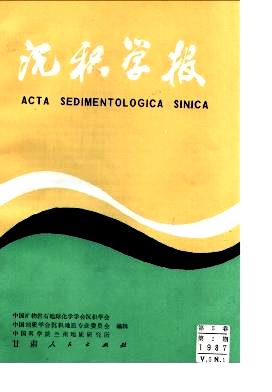SIGNIFICANCE OF MINERAL INCLUSIONS FROM CARBONATE AREAS IN THE OIL AND GAS PROSPECT EVALUATION
- Received Date: 1985-03-18
- Publish Date: 1987-03-10
Abstract: This paper deals with how the inclusion is used in a new study field which is about the evaluation of oil-and-gas resources in cardonate areas. The authors put emphasis on the possibility of the inclusion application in the oil-and-gas prospect evaluation and some major problems which might be resolved by using the inclusion stuby method in the research of oil and gas resources. On the basis of the research on the oilandgas reservoirs and nonreservoirs of carbonate rocks in Hebei, Sichuan, Guizhou provinces and Guangxi Zhuang Autonomous Region, it has been proved that the inclusion can be formed in each stage of oil and gas accumulation and may be a fluid inclusion of gas and liquid phase, often seen in carbonate rocks, or an organic inclusion containing hydrocarbons. However, the organic inclusion can directly provide evidence for primary and secondary migration of hydrocarbons from carbonate rocks. In the oil and gas resource evaluation,it is possible to investigate the thermal history of petroleum genesis and the maturity of organic matter according to the type, feature, palaeotemperature, and gaseous-phase composition of inclusions. For example, the type of the inclusion from oil-bearing indication rocks in Pingquan, Hebei is mainly of the pure-liquid inclusion and fluid-hydrocarbon-bearing organic inclusion, and the homogenization temperature is 120-145℃. For another example, the type of the inclusion from carbonate minerals with a large amount of anthraxolite in Guangxi is mainly of the gas-liquid phase fluid inclusion, however, the organic inclusion in the minerals consists mainly of gaseous hydrocarbon and solid bitumen, and the homogenization temperature is 240-260℃. The analysis results show that the gaseous-phase compositions in inclusions are mainly H2O and CO2 in low stage of evolution, but CH4 is increasing along with the evolution development towards high stage. Taking the inclusion in Pingquan, Hebei, and Shang-lin, Guangxi as an example, its CH4/H2O + CO2 values are 0.0015 and 0.0075 (wt%) respectively. Moreover, the inclusion can be used to study the origin and estrapment conditions of oil and gas in order to obtain chemical compositions of ancient oil-field water,salinity,stable isotopes of C,H,O,oxidizing reduction potential,acidity,and fluid pressure parameters etc. May be determined by using inclusion study. For example,the liquid compositions of the inclusion from oil and gas reservoirs in Eastern Sichuan and Pingquan, Hebei are S-poor, but Cl, Na-rich, the fluid salinity is 13-14.5 wt%, and the D value of the mineralizing fluid in Eastern Sichuan is-29.27%,δ18O is+ 0.37‰, pH=7.2-7.6, these show that it is of palaeo-seawater character. The reduction parameter of the fluid is 1.0, indicating a reducing environment.
| Citation: | Shi jixi, Fu Jiamo, Li Benchao, Jia Rongfen. SIGNIFICANCE OF MINERAL INCLUSIONS FROM CARBONATE AREAS IN THE OIL AND GAS PROSPECT EVALUATION[J]. Acta Sedimentologica Sinica, 1987, 5(1): 86-93. |






 DownLoad:
DownLoad: